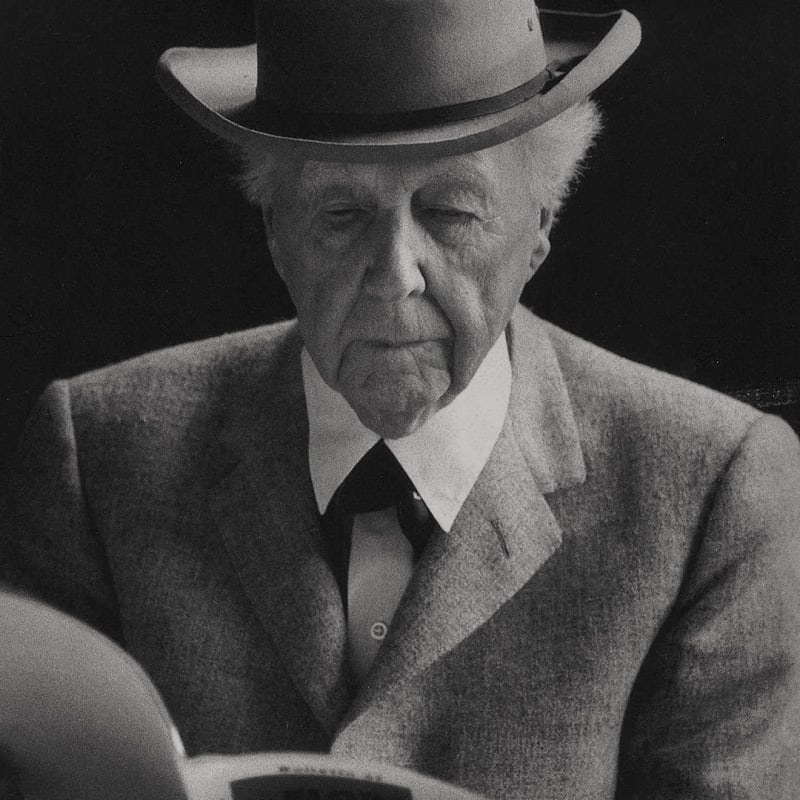Frank Lloyd Wright
Overview
Philosophy of 'organic architecture,' harmonizing buildings with their natural surroundings
Frank Lloyd Wright (1867–1959) was a pioneering American architect known for his philosophy of "organic architecture," which sought to harmonize buildings with their natural surroundings. His work revolutionized architecture by emphasizing open, flowing spaces and the integration of structure, interior, and furniture. Wright designed not only iconic buildings but also custom furniture to complement his designs, ensuring a seam-less experience between architecture and daily life.
His most famous projects include Fallingwater (1935–1939), the Solomon R. Guggenheim Museum (1956–1959), and the Frederick C. Robie House (1909). Wright's furniture, particularly the low tables he designed for his homes, reflected his commitment to simplicity, functionality, and a connection to nature. His designs featured geometric lines and natural materials, embodying the same principles that defined his architectural work.
